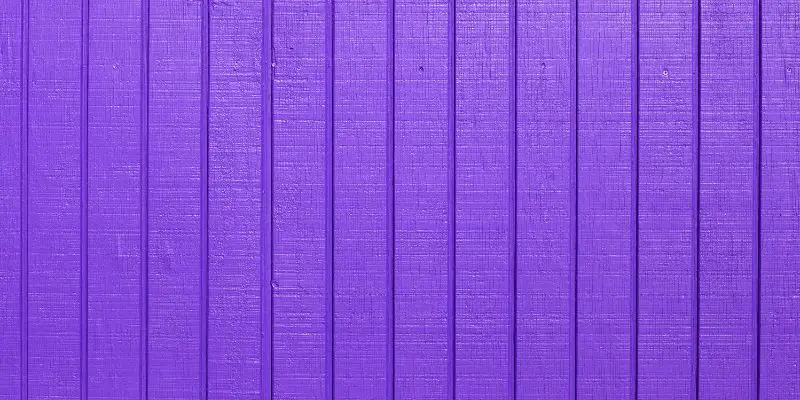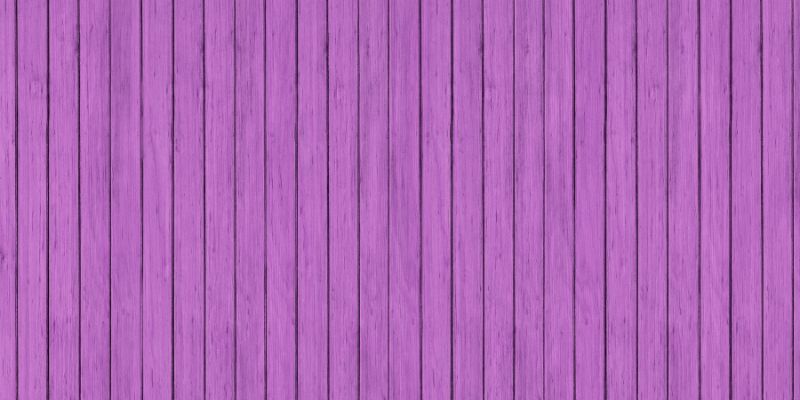Purple Heart Wood is from South America. It is a dense hardwood known for its vibrant purple color.
Purple Heart Wood is a unique type of wood that originates from South America. This dense hardwood is highly sought after for its distinct and vibrant purple color. Its striking appearance makes it a popular choice for furniture, flooring, and decorative items.
Purple Heart Wood’s natural beauty and durability make it a valuable and coveted material in woodworking and craftsmanship. Whether used in intricate designs or as a statement piece, Purple Heart Wood adds a touch of elegance to any project. Its origin in South America contributes to its exotic appeal, making it a prized resource for those looking to create stunning and eye-catching pieces.
The Origins Of Purple Heart Wood
When you think of exotic and striking wood varieties, one that immediately springs to mind is Purple Heart wood. This vibrant and eye-catching wood has become increasingly popular among woodworkers and craftsmen due to its beautiful color and durability. But where does Purple Heart wood come from?
Natural Habitat
Purple Heart wood, scientifically known as Peltogyne, is native to the rainforests of Central and South America. Specifically, it is found in countries such as Brazil, Mexico, Peru, and Venezuela. This wood variety thrives in these regions due to the hot and humid climate, as well as the rich soil.
Interestingly, Purple Heart trees can reach impressive heights of up to 130 feet, making them an impressive sight in their natural habitat. The tree’s bark ranges from grey to dark brown, providing a stark contrast to the vibrant purple hue of its heartwood.
Due to the growing demand for Purple Heart wood, sustainable logging practices are crucial to protect this valuable natural resource. Responsible forestry management is essential to ensure the long-term survival of these magnificent trees in their native habitats.
Historical Use And Symbolism
Throughout history, Purple Heart wood has held great significance in various cultures and societies. The indigenous people of Central and South America often used this wood for a range of practical purposes, including construction and the making of tools and weapons.
In addition to its practical applications, Purple Heart wood also carries symbolism. It is sometimes associated with power, wealth, and nobility. In some cultures, it is believed that Purple Heart wood possesses protective qualities, warding off negative energy and promoting positive energy.
| Indigenous Use: | Symbolism: |
|---|---|
|
|
Today, Purple Heart wood continues to be highly sought after among artisans and craftsmen for a variety of applications. It is used in both functional and decorative woodworking projects, ranging from furniture and flooring to cabinets and musical instruments.
In conclusion, understanding the origins of Purple Heart wood can deepen our appreciation for its beauty and significance. Its natural habitat in the rainforests of Central and South America, along with its historical use and symbolism, make it a truly remarkable wood variety that continues to captivate the attention of wood enthusiasts worldwide.

Characteristics Of Purple Heart Wood
Purple Heart Wood is a unique and distinctive type of wood that stands out for its extraordinary features. From its eye-catching color to its impressive durability and workability, Purple Heart Wood has become a popular choice among craftsmen and woodworking enthusiasts. In this section, we will explore the key characteristics that make Purple Heart Wood truly exceptional.
Distinctive Color And Grain
Purple Heart Wood is renowned for its vibrant purple color, which is unlike any other wood species. Its deep and rich hue adds a touch of elegance and sophistication to any project. The striking purple color can vary from a reddish-purple to a bluish-purple, depending on factors such as age and exposure to sunlight. This unique coloring makes Purple Heart Wood a sought-after material for those looking to create standout pieces.
In addition to its captivating color, Purple Heart Wood also possesses an attractive grain pattern. The grain can showcase variations, ranging from straight to irregular or wavy, adding an element of visual interest to the wood. The combination of its distinctive color and grain makes Purple Heart Wood a visually captivating choice for both furniture and decorative items.
Durability And Workability
Purple Heart Wood is not only eye-catching but also highly durable. It boasts excellent strength and hardness, making it ideal for projects that require longevity and resistance to wear and tear. Whether used for furniture, flooring, or outdoor structures, Purple Heart Wood can withstand heavy usage and maintain its structural integrity over time.
Despite its remarkable durability, Purple Heart Wood is surprisingly easy to work with. It has good machining characteristics and can be cut, shaped, and turned with relative ease. Its straight and uniform grain allows for smooth and precise woodworking, reducing the risk of splintering or cracking. Craftsmen appreciate the versatility of Purple Heart Wood, as it can be utilized in a wide range of woodworking projects.
Cultural Significance
The Purple Heart Wood, derived from the Peltogyne tree, holds great cultural significance for various communities around the world. From traditional and spiritual uses to modern applications and artistry, this distinctive wood has played a pivotal role in cultural practices and craftsmanship.
Traditional And Spiritual Uses
For centuries, Purple Heart Wood has been revered for its traditional and spiritual significance. In many indigenous cultures, the wood is believed to possess mystical properties and is often utilized in sacred ceremonies and rituals. The vibrant hue of Purple Heart Wood symbolizes strength, courage, and protection, making it a sought-after material for crafting spiritual artifacts and ceremonial objects.
Modern Applications And Artistry
In the contemporary era, Purple Heart Wood continues to be prized for its exceptional qualities and versatility. Renowned for its rich purple color and durability, the wood is extensively utilized in fine woodworking, cabinetry, and artisanal craftsmanship. Its striking appearance and natural luster make it a favored choice for creating exquisite furniture, musical instruments, and decorative art pieces.
Sustainability And Conservation
When it comes to sustainability and conservation, Purple Heart Wood stands out as a prime example of responsible harvesting and preservation efforts. This rare and striking hardwood, known for its deep purple hue, holds a special place in the hearts of woodworkers and enthusiasts alike. But what makes Purple Heart Wood truly remarkable is the dedication to preserving its beauty for generations to come.
Harvesting And Economic Impact
Purple Heart Wood is primarily harvested from the regions of Central and South America, most notably Brazil and Suriname. These areas are home to the Peltogyne genus of trees, which produce the distinct purple-colored heartwood. With a dense and durable nature, Purple Heart Wood serves various purposes, from crafting furniture to constructing musical instruments.
The economic impact of Purple Heart Wood cannot be understated. Its unique properties and eye-catching appearance make it a highly sought-after material in the woodworking industry. The demand for this exquisite hardwood continually drives local economies, providing income for communities involved in the cultivation, harvesting, and processing of Purple Heart Wood.
Preservation Efforts And Challenges
Preserving the sustainability of Purple Heart Wood is a critical endeavor. Due to its increasing popularity, conservation efforts have become a paramount concern. Overharvesting and illegal logging pose significant challenges to maintaining sustainable practices in the industry.
To combat these threats, various organizations and initiatives have been established to enforce regulations and raise awareness about responsible timber sourcing. Sustainable forest management practices are implemented to ensure the long-term viability of Purple Heart Wood, allowing replenishment and regrowth of the species.
However, despite these efforts, challenges such as illegal trade, deforestation, and habitat destruction persist. Striking a balance between meeting the demand for Purple Heart Wood products and safeguarding its future remains an ongoing challenge.
Future Exploration And Innovation
In the world of woodworking, the future is bright. With advances in research and development, Purple Heart Wood holds tremendous potential for being at the forefront of future exploration and innovation. From its stunning aesthetics to its durable and versatile nature, this exotic wood species continues to captivate the imaginations of both artisans and manufacturers alike.
Research And Development
Research and development play a pivotal role in unlocking the full potential of purple heart wood. Scientists and experts are constantly pushing the boundaries of our knowledge of this unique species, seeking new methods of extraction and processing to enhance its properties. The ongoing research aims to discover innovative ways to maximize its usability and sustainability.
From discovering new treatment methods that increase purple heart wood’s resistance to insects and decay to exploring techniques that enhance its natural color and grain patterns, research and development efforts are poised to bring about breakthroughs in the woodworking industry. These advancements will not only benefit woodworkers but also contribute to the preservation of this precious resource.
Contemporary Relevance And Market Trends
With sustainable and eco-friendly practices becoming increasingly vital, purple heart wood has gained tremendous contemporary relevance in the market. This exotic wood species offers a responsible and eco-conscious choice for those seeking high-quality materials. Its popularity continues to surge as more individuals and companies recognize the importance of sustainable sourcing.
Moreover, the unique characteristics of purple heart wood, such as its hardness and resistance to wear, make it highly sought-after in various industries. From flooring to furniture making, purple heart wood’s durability ensures that the end products are long-lasting and able to withstand the test of time.
Keeping up with emerging market trends in the woodworking industry, manufacturers and designers are incorporating purple heart wood into modern and innovative applications. From the interior design of luxurious homes to the development of cutting-edge architectural structures, purple heartwood is making its mark as a symbol of elegance and sustainability.
In conclusion, as research and development continue to uncover the untapped potential of purple heart wood, its future in exploration and innovation remains incredibly promising. The contemporary relevance and market trends demonstrate the growing demand for sustainable and durable materials. As we embrace the future, purple heart wood is certain to be at the forefront of creativity and innovation in the woodworking industry.

Frequently Asked Questions On Where Is Purple Heart Wood From
Does Purple Heart Wood Grow In The United States?
Yes, purple Heartwood grows in the United States, primarily in the tropical regions of Central and South America.
Why Is Purple Heart Wood So Expensive?
Purple Heart wood is expensive due to its scarcity, durability, and unique appearance. Its limited availability drives up the price, as does its ability to withstand wear and tear. The distinctive purple color also adds to its allure, making it a prized choice for high-end furniture and decorative items.
Where Does Purple Heart Hardwood Come From?
Purple Heart hardwood comes from Central and South America. It is known for its deep purple color and durability.
Is Purple Heart Wood Legal?
Yes, Purple Heart wood is legal to use and trade. It is not listed as a protected species under CITES or the Endangered Species Act, so it can be legally harvested and sold. However, it’s important to check local regulations before using or selling Purple Heart wood.
Conclusion
Purple Heart Wood is a rare and beautiful hardwood originating from the tropical forests of Central and South America. It’s known for its striking purple color, durability, and versatility in woodworking. Whether you’re a craftsman, designer, or simply an admirer of fine woodwork, Purple Heart Wood is a unique and valuable addition to any project.
Explore this remarkable wood and bring a touch of exotic beauty to your next creation.


